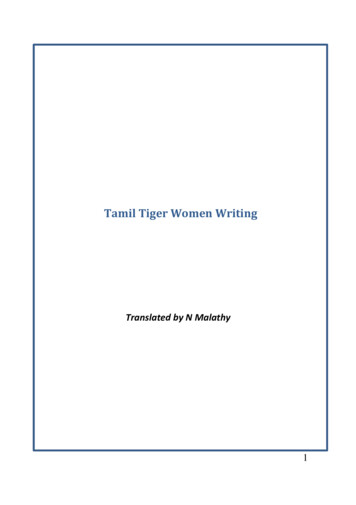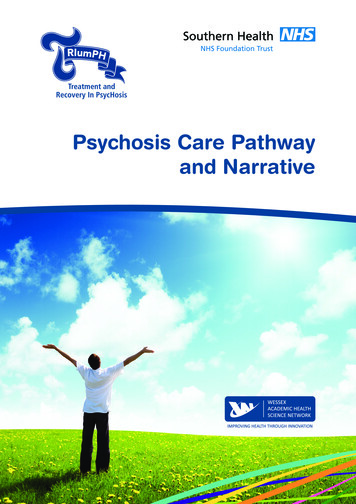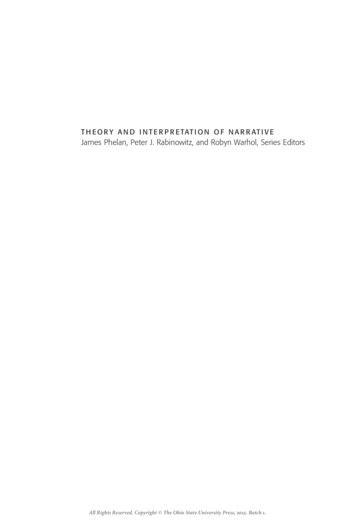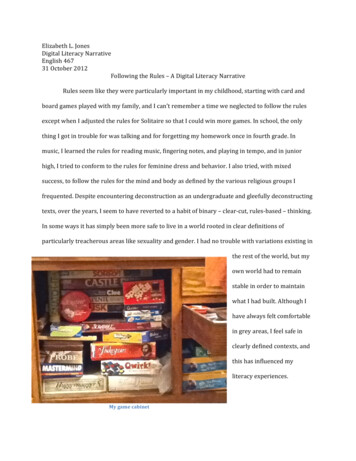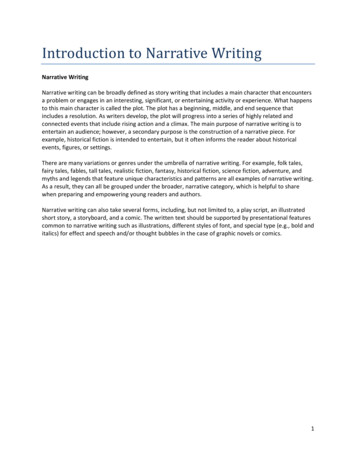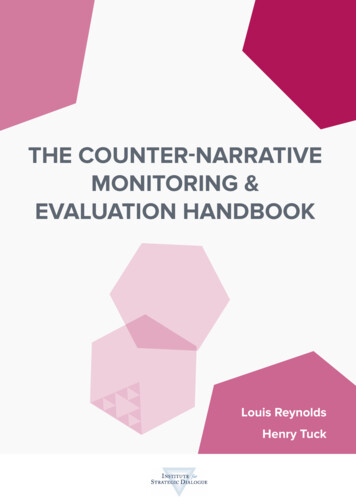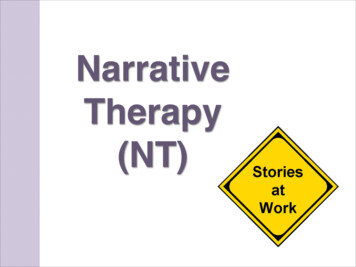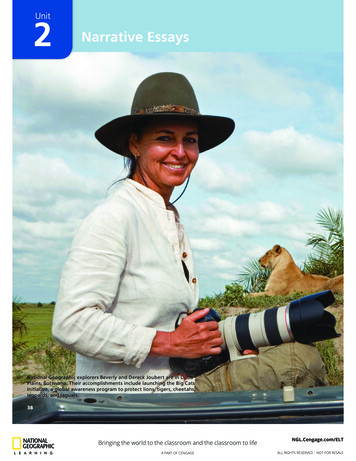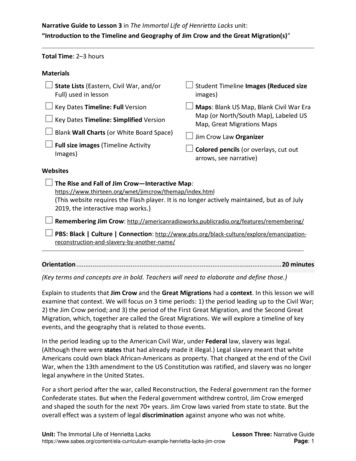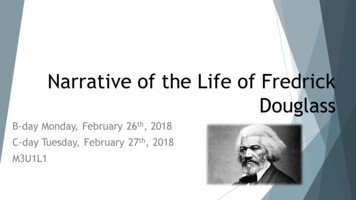
Transcription
Narrative of the Life of FredrickDouglassB-day Monday, February 26th, 2018C-day Tuesday, February 27th, 2018M3U1L1
DO-NOW Learning Targets I can determine Fredrick Douglass’ (author)point of view and purpose his autobiography,Narrative of the Life of Fredrick Douglass. I can begin to analyze the historical contextour new central text, Narrative of the Life ofFredrick Douglass.
Narrative of the Life of Fredrick Douglass (NotLoFD)MIND MAP: What do you already know about FredrickDouglass?
Gallery Walk of primary source documentsrelated to our new central text NotLoFD
Gallery Walk protocol directions Make inferences based on evidence in a series of photographs andprimary source documents You will work together in small groups examining the primarysources Record one noticing and one wondering about each primarysource on the poster, you have 2-3 minutes
DO-NOW Learning Targets I can determine Fredrick Douglass’ (author)point of view and purpose his autobiography,Narrative of the Life of Fredrick Douglass. I can begin to analyze the historical contextour new central text, Narrative of the Life ofFredrick Douglass.
Gallery Walk Item 1Quote from Narrative of the Life of Frederick Douglass“There were no beds given the slaves, unless one coarse blanket be consideredsuch, and none by the men and women had these. This, however, is notconsidered a very great privation. They find less difficulty from the want of beds,than from the want of time to sleep when this [work] is done, old and young,male and female, married and single, drop down side by side, on one commonbed,—the cold, damp floor,—each covering himself or herself with their miserableblankets; and here they sleep until they are summoned to the field by the driver’shorn. Mr. Severe, the overseer, use to stand by the door of the quarter, armedwith a large hickory stick and heavy cowskin, ready to whip anyone who was sounfortunate as not to hear, or, from any other cause, was presented from beingready to start for the field at the sound of the horn.”Douglass, Frederick. Narrative of the Life of Frederick Douglass. Boston, Massachusetts: Anti -Slavery Office, 1845. ProjectGutenberg. Web.
Gallery Walk Item 2Quote from Narrative of the Life of Frederick Douglass“I have been frequently asked how I felt when I found myself in afree State. I have never been able to answer the question with anysatisfaction to myself. It was a moment of the highest excitement Iever experienced. I suppose I felt as one may imagine the unarmedmariner to feel when he is rescued by a friendly man-of-war fromthe pursuit of a pirate I felt like one who had escaped a den ofhungry lions.”Douglass, Frederick. Narrative of the Life of Frederick Douglass. Boston, Massachusetts: AntiSlavery Office, 1845. Project Gutenberg. Web.
Gallery Walk Item 3
Gallery Walk Item4
Gallery Walk Item 5Defense of slaveryQuotes from “The Universal Law of Slavery” by George Fitzhugh (from Africans in America)“He the Negro is but a grown up child, and must be governed as a child, not as a lunatic or criminal.The master occupies toward him the place of a parent or guardian.”“ the negro race is inferior to the white race, and living in their midst, they would be faroutstripped or outwitted in the chaos of free competition.”“Our negroes are not only better off as to physical comfort than free laborers, but their moralcondition is better.”
Gallery Walk Item 6
Gallery Walk Item 7
Gallery Walk Item 8
Before we read, let’s talk about what we do when we read closely.Things Close Readers Do Get the gist – figure out what the text is mostly aboutRe-readCite evidence – author’s use of descriptive languageUse details from the text to make inferencesUse context clues to figure out word meaningsContinuously think about how all this comes together for youas the reader Talk with others about the text
DO-NOW Learning Targets I can determine Fredrick Douglass’ (author)point of view and purpose his autobiography,Narrative of the Life of Fredrick Douglass. I can begin to analyze the historical contextour new central text, Narrative of the Life ofFredrick Douglass.
Close Read poem “slaveships” by Lucille ClintonRe-read and analyze this portion of the poemloaded like spoonsinto the belly of Jesuswhere we lay for weeks for monthsin the sweat and stinkof our own breathing
The Middle PassageBe ready to share your thoughts on this shortvideo (2:34) about the Middle Passage:https://www.youtube.com/watch?v 0IJrhQE6DZk
DO-NOW Learning Targets I can determine Fredrick Douglass’ (author)point of view and purpose his autobiography,Narrative of the Life of Fredrick Douglass. I can begin to analyze the historical contextour new central text, Narrative of the Life ofFredrick Douglass.
Exit Ticket – Learning Target Tracker
Homework –Find one or two interestingfacts about Fredrick Douglass andRochester, NY to share with the class.
Narrative of the Life of Frederick Douglass. Boston, Massachusetts: Anti-Slavery Office, 1845. Project Gutenberg. Web. Gallery Walk Item 2 Quote from Narrative of the Life of Frederick Douglass “I have been frequently asked how I felt when I found myself in a free Stat


